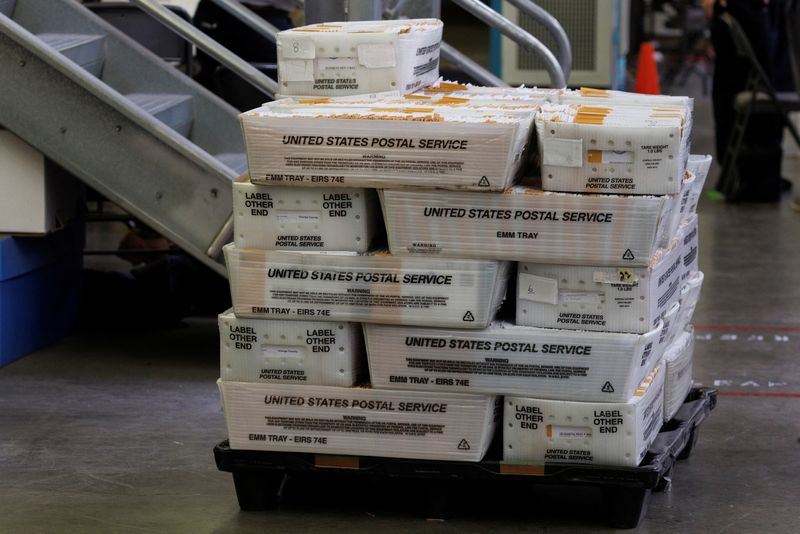WASHINGTON (Reuters) – The Pennsylvania Supreme Court on Friday reversed a lower court’s ruling from almost two weeks ago that had said the two most populous counties of the battleground state will not be able to throw out mail-in votes over incorrect envelope dates.
KEY QUOTES
The Pennsylvania Supreme Court’s Friday ruling said Commonwealth Court of Pennsylvania “lacked subject matter jurisdiction to review the matter,” according to a court filing.
The Republican Party welcomed the ruling. Voting rights advocates including the American Civil Liberties Union said they will look at pursuing additional legal options and said the ruling was a “setback for Pennsylvania voters.”
WHY IT’S IMPORTANT
Pennsylvania is a key battleground state in a tight presidential race for the Nov. 5 U.S. elections in which Democratic Vice President Kamala Harris faces Republican former President Donald Trump.
Battleground states are those where elections were won by a narrow margin of 3 percentage points or less in the last contest. Pennsylvania is one of seven such states.
The ruling will mean that state election officials will not be counting misdated ballots in the election unless courts intervened again before the elections.
CONTEXT

The late August ruling in the Commonwealth Court of Pennsylvania applied to the Philadelphia and Allegheny Counties. It had said that refusal to count undated or incorrectly dated but timely mail ballots submitted by eligible voters violated the right to vote.
Officials disqualified nearly 16,000 mail-in ballots for irregularities during April’s primary election. Almost half were disqualified because of issues such as missing signatures and wrong dates on outer envelopes, according to the New York Times.
To read the full article, Click Here

